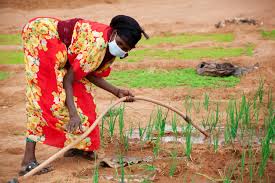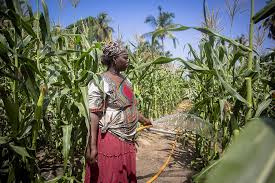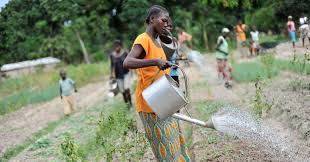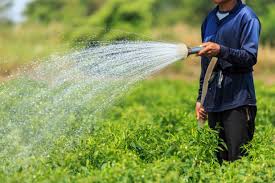Water scarcity in agriculture refers to the insufficient availability of water resources to meet the demands for irrigation and crop production.
As global populations grow and climate change affects weather patterns, water scarcity poses a significant challenge to agricultural sustainability and food security.
Causes of Water Scarcity
Understanding the causes of water scarcity is crucial for addressing the issue. The main causes include:
1. Climate Change: Changes in precipitation patterns and increased evaporation rates due to rising temperatures contribute to reduced water availability.
2. Population Growth: As the global population increases, the demand for water for agricultural, domestic, and industrial use intensifies.
3. Inefficient Water Use: Ineffective irrigation practices and technologies lead to significant water losses, exacerbating scarcity.
4. Pollution of Water Sources: Contaminated water bodies reduce the amount of usable water available for agricultural purposes.
5. Over-extraction of Groundwater: Excessive withdrawal of groundwater for irrigation depletes aquifers and reduces water supply.
Effects of Water Scarcity on Irrigation Practices

Water scarcity directly affects how irrigation practices are implemented. Key effects include:
1. Reduced Irrigation Coverage: Farmers may reduce the area under irrigation due to limited water availability, impacting overall agricultural productivity.
2. Adoption of Water-Saving Technologies: To cope with scarcity, farmers may shift to more efficient irrigation systems, such as drip or sprinkler irrigation.
3. Prioritization of Water Use: Farmers may prioritize certain crops over others based on their water requirements, often leading to reduced diversity in production.
4. Increased Costs: The need for water-saving technologies and management strategies can lead to higher costs for farmers, impacting profitability.
5. Altered Planting Schedules: Water scarcity can force farmers to adjust planting and harvesting schedules to align with available water resources.
Impacts on Crop Yields and Food Security
Water scarcity has profound implications for crop yields and food security. Key impacts include:
1. Decreased Crop Yields: Insufficient water can lead to reduced plant growth, lower yields, and poor quality of produce.
2. Food Insecurity: Lower agricultural productivity can result in food shortages, increased prices, and heightened food insecurity for vulnerable populations.
3. Nutritional Deficiencies: Reduced food availability can lead to a decline in nutritional quality and increased malnutrition rates.
4. Economic Instability: Food scarcity can contribute to economic instability, affecting farmers’ livelihoods and local economies.
5. Social Conflicts: Competition for limited water resources can lead to conflicts among farmers, communities, and even nations.
Read Also: Melon Farming (Cucumis melo): Complete Growing Guide for High Yields
Economic Consequences of Water Scarcity

Water scarcity can have significant economic ramifications for the agricultural sector and beyond. These consequences include:
1. Increased Production Costs: Farmers may face higher costs for water supply and irrigation technologies, impacting overall profitability.
2. Loss of Employment: Reduced agricultural productivity can lead to job losses in farming and related industries, affecting livelihoods.
3. Impact on Trade: Countries reliant on agricultural exports may experience economic downturns due to decreased production and exports.
4. Infrastructure Strain: Water scarcity can put pressure on existing infrastructure, necessitating costly investments in water management systems.
5. Long-term Economic Decline: Persistent water scarcity can lead to long-term economic challenges for communities dependent on agriculture, hindering development and growth.
Read Also : Mustard Seeds (Brassica nigra): Health Benefits, Facts, and Side Effects
Sustainable Irrigation Solutions

Sustainable irrigation solutions aim to optimize water use while ensuring agricultural productivity and environmental health. Key solutions include:
1. Drip Irrigation: This method delivers water directly to the roots of plants, minimizing water waste and evaporation. It is particularly effective for high-value crops.
2. Rainwater Harvesting: Collecting and storing rainwater for irrigation helps supplement water supplies, especially in areas with seasonal rainfall.
3. Soil Moisture Sensors: These sensors help monitor soil moisture levels, allowing farmers to irrigate only when necessary, thus conserving water.
4. Crop Rotation and Diversification: Planting a variety of crops can improve soil health and reduce the overall water requirement for irrigation.
5. Conservation Tillage: Reducing tillage practices helps maintain soil moisture and reduces erosion, leading to more efficient water use.
Role of Technology in Addressing Water Scarcity
Technology plays a crucial role in mitigating water scarcity in agriculture. Key technological innovations include:
1. Automated Irrigation Systems: These systems utilize sensors and timers to optimize watering schedules, reducing water waste.
2. Precision Agriculture: Using data analytics and GPS technology allows farmers to apply water and nutrients precisely where and when needed, increasing efficiency.
3. Remote Sensing: Satellite imagery and drones can monitor crop health and soil moisture levels, providing insights for better irrigation management.
4. Water Recycling Systems: Technologies that enable the reuse of treated wastewater for irrigation help maximize water resources.
5. Desalination Technologies: In areas with access to seawater, desalination can provide a reliable source of freshwater for agricultural use.
Policy Measures and Government Initiatives
Governments play a vital role in addressing water scarcity through policies and initiatives. Key measures include:
1. Water Management Regulations: Implementing regulations that promote sustainable water use and protect water resources can help mitigate scarcity.
2. Incentives for Efficient Irrigation: Providing financial incentives or subsidies for farmers to adopt water-efficient irrigation technologies encourages sustainable practices.
3. Investment in Infrastructure: Governments can invest in irrigation infrastructure, such as canals and reservoirs, to improve water distribution and availability.
4. Education and Training Programs: Offering training for farmers on sustainable practices and technology usage enhances knowledge and adoption of efficient methods.
5. Collaboration with Stakeholders: Engaging with farmers, water authorities, and NGOs fosters a collaborative approach to managing water resources sustainably.
Do you have any questions, suggestions, or contributions? If so, please feel free to use the comment box below to share your thoughts. We also encourage you to kindly share this information with others who might benefit from it. Since we can’t reach everyone at once, we truly appreciate your help in spreading the word. Thank you so much for your support and for sharing!
Read Also: Benefits of Automated Farming

